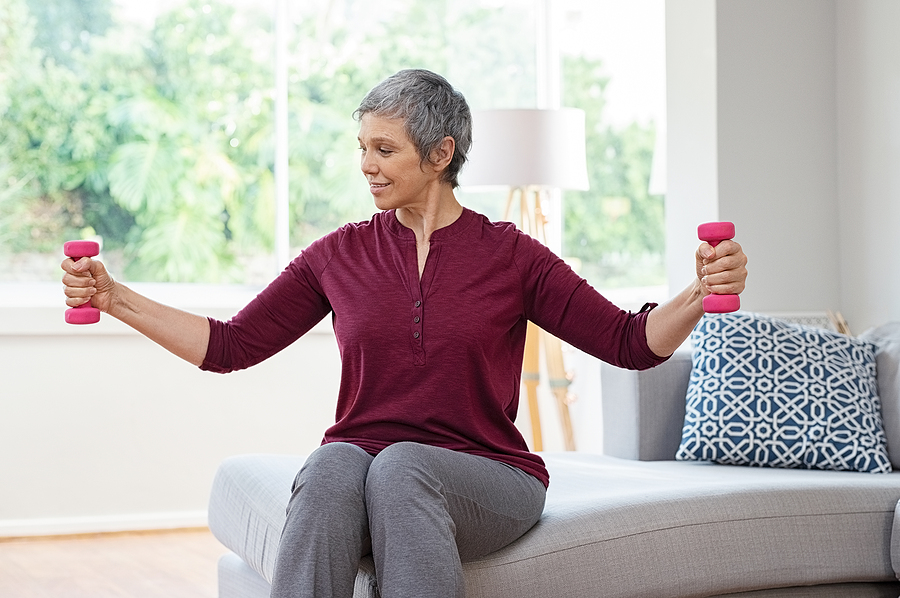April 28, 2025

Staying physically active is essential for seniors, as it promotes general health, lowers the risk of chronic diseases, and improves mental health. However, many seniors experience mobility issues, chronic pain, or a lack of enthusiasm to be active. In-home care services can encourage and support physical activity in entertaining and creative ways while ensuring its safety and enjoyment.
Regular movement promotes cardiovascular health, muscle strength, and balance, lowering the chance of falling. In addition, regular physical activity has been related to enhanced mood and cognitive function, which can help in the treatment of depression and dementia. In-home caregivers are trained to help seniors incorporate activity into their everyday life in ways that are both accessible and enjoyable.
Some of the strategies that in-home care might introduce to get seniors motivated about physical activity include the following:
Chair Exercises and Seated Workouts: Caregivers can teach chair exercises to seniors with restricted mobility to help them gain strength and flexibility. Seated leg lifts, arm raises with small weights, and chair yoga can all help to maintain muscle tone and circulation while minimizing joint strain.
Dance and Music Therapy: Dancing is a fun and efficient way to stay active. Caregivers can encourage seniors to participate in dancing by encouraging them to join group dance classes or dance to music in the home. If dancing happens at home, caregivers can also help seniors find videos to follow along with. Even seated dance workouts can improve coordination and mood with the help of music.
Gardening: Gardening is a great way for seniors to stay active while getting some fresh air and sunshine. In-home care can assist with planting, watering, and harvesting, as well as ensure that seniors are safe when engaging in the activity.
Virtual Fitness Classes and Interactive Games: Technology has created new opportunities for seniors to participate in physical activity. In addition to the videos mentioned above, caregivers can assist seniors in accessing age-appropriate virtual fitness sessions such as tai chi, yoga, and aerobics. Interactive video games, such as VR, can also make remaining active more enjoyable than plain exercise.
Stretching and Breathing Exercises: Simple stretching activities increase flexibility and relieve stiffness, particularly for seniors suffering from arthritis or joint discomfort. Caregivers can lead seniors through simple stretching exercises and breathing techniques that promote relaxation, circulation, and mobility.
One of the most significant challenges to remaining active is a lack of motivation. In-home care offers seniors encouragement, company, and gentle reminders to help them incorporate activity into their everyday life. By tailoring exercises to a senior’s abilities and interests, caregivers ensure that physical activity is not only useful but also enjoyable.
Physical activity does not have to feel like exercise. It can be enjoyable, interesting, and adaptable to all skill levels. Seniors can keep active with the help of in-home care by engaging in innovative, low-impact activities that promote health, fun, and independence.
Sources:
https://agingtoday.com/health/exercise-guide/
https://seniorservicesofamerica.com/blog/how-to-keep-seniors-active/
https://www.ncoa.org/article/boosting-physical-activity-among-older-adults-strategies-for-senior-center
https://www.nia.nih.gov/health/exercise-and-physical-activity/tips-getting-and-staying-active-you-age